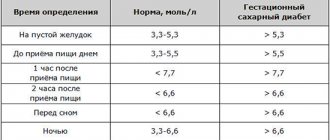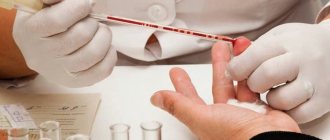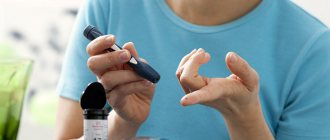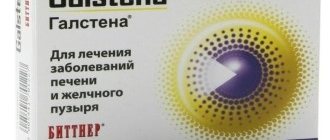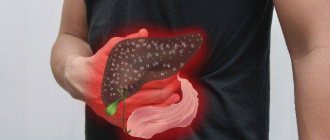Author
Boluchevsky Dmitry Nikolaevich
Chief physician
Leading doctor
Urologist
until February 28
We're giving away RUR 1,000 for all services per visit in February More details All promotions
Urinalysis according to Nechiporenko
is a laboratory diagnostic method that allows you to determine the condition of the kidneys and urinary tract, in particular, to identify hidden inflammation.
The Nechiporenko analysis is used not only to establish a diagnosis. It can be used to monitor the progress of treatment.
History of appearance
The author of this research method is Alexander Zakharovich Nechiporenko, scientist, Soviet urologist-oncologist, military surgeon, teacher. While examining the urine of patients, a scientist once drew attention to its “unevenness” - every day the urine was different, its quantitative and qualitative composition changed.
Therefore, he made the following proposal: urine samples should be taken taking into account its daily changes - in the morning, collecting only the middle portion for study (the first and last few milliliters were supposed to be poured into the toilet).
Why did the Soviet urologist suggest this particular method? The fact is that the first and last portions of urine may contain sediment from the bladder and washouts from the urethra, and the doctor was interested in searching for hidden inflammation of the urinary system.
The elements found in the average portion of urine are counted using a special method, which is similar to the system for counting blood elements. The obtained indicators help to diagnose the urinary system and detect disturbances in its functioning.
Collection of analysis from infants
Many parents are perplexed about how to collect a urine test from a child who is less than a year old. After all, it is difficult to do this. To take urine from a baby, you should use a urinal. It consists of an oilcloth with a hole and a surface with a sticky layer. The sticky side will stay on your baby's skin until he urinates. Before collecting urine from a child, you should wash it.
The baby should be placed on the changing table and calmed down. You need to place a container between its legs. After this, the baby will need to be lifted and waited until he goes down in a small way. After this, the urine bag can be peeled off from its legs, and the collected urine can be poured into a separate container.
The method of collecting urine using a urine bag is suitable for both little boys and girls. It can be used for both newborns and one-year-old children.
Advantages of the method
- Preparing the patient for urine collection is easy, and the method does not require much labor from medical personnel.
- The research technique is simple, the results are not inferior in reliability to other methods, and the analysis is carried out relatively quickly.
- The study requires a small amount of biomaterial.
- Allows you to easily monitor the dynamics of the pathological process and monitor the effectiveness of therapy.
- Helps determine inflammation in indolent forms of diseases.
Collection rules
In order for the Nechiporenko test to show an objective result, it is necessary to adhere to the rules for collecting material and preparing for analysis. The doctor referring the patient for further examination should talk about them.
Preparation begins 1-2 days before the urine test. Strong physical exertion and stressful situations should be avoided. You need to give up alcoholic beverages and smoking. Doctors recommend not taking diuretics on the eve of the test, and excluding from the menu foods that can change the color of urine not only in children, but also in adults:
- beets;
- carrot;
- green asparagus;
- blueberries;
- strong black tea.
The test should not be performed on women who are about to start their period or have already started their period. At the end of the “critical days”, it is also worth holding off on going to the laboratory for 1-2 days.
Some time may pass after the cystoscopy. Submission of urine for analysis is possible when the urethral mucosa is completely restored.
Collecting urine for testing is not difficult. To get a reliable result, you need to prepare a sterile container with a volume of 150-200 ml in advance. This can be a plastic container purchased at a pharmacy kiosk, or a glass jar with a lid.
For analysis you will need morning urine. To make a fence, you need to follow simple steps.
- Thoroughly clean the external genitalia, rinsing off any remaining soap.
- Collect an average portion of urine in a container (take 30-40 ml), releasing the first and last into the toilet.
- Deliver the biomaterial to the laboratory where microscopy is performed no later than 2-3 hours after collection.
It should be remembered that donating urine prepared in advance does not make sense. The analysis will be biased.
You can pick up the results of the study in the laboratory a few hours later on the same day when the material is submitted. Some centers provide data within 24 hours.
What is it prescribed for?
As described above, the Nechiporenko research method is used as a diagnostic one. It is usually prescribed after a general analysis (if any deviations were identified in the indicators) in order to obtain a more detailed picture from the collected data for making a diagnosis.
Deviation from normal readings indicates the presence of a disease
This analysis is also done to monitor the effectiveness of the therapy. The data is interpreted as follows:
- The norm of leukocytes is up to 2000 per 1 ml; if there are more of them, then an inflammatory process occurs. Increased levels are observed with prostatitis, pyelonephritis, urolithiasis, and cystitis.
- The norm of red blood cells is up to 1000 in 1 ml. If the readings are higher, then there is every reason to suspect serious inflammation with bleeding.
- According to the established norm, 1 ml of urine can contain up to 20 hyaline casts. If more of them are found, then inflammation is probably actively developing in the renal pelvis.
It is important to understand that only a doctor can correctly understand the analysis. There is no point in trying to find out on your own from an analysis whether you have cystitis or not - a comprehensive examination is required to make a diagnosis. In addition, the results may be erroneous (if the patient did not know how to properly collect urine or it was transported incorrectly).
Presence of leukocytes, erythrocytes and casts in the biomaterial
The presence of leukocytes, red blood cells and casts in urine indicates the presence of infectious processes in the body.
In normal conditions, the determination of leukocytes should not show a result of more than 2000 per milliliter of fluid. Exceeding this indicator indicates the progression of certain pathologies in the body. An increase in white blood cells may be due to the presence of the following disorders:
- Development of prostatitis.
- Formation of kidney stones.
- Development of pyelonephritis in acute or chronic form.
- Presence of stones in the bladder.
- Progression of cystitis in acute or chronic form.
- Development of urethritis in the chronic or acute phase.
- Progression of glomerulonephritis.
- Presence of prostate adenoma oncology.
- Development of vaginitis and vulvovaginitis.
- Development of sexually transmitted infections.
The presence of more than the acceptable level of red blood cells indicates the presence of the following in the patient:
- acute glomerulonephritis;
- nephrotic syndrome;
- renal infarction;
- prostate adenoma cancer;
- bladder oncology;
- kidney oncology;
- toxic kidney poisoning;
- hypertension caused by kidney disease;
- kidney stones;
- hypertensive kidney damage;
- kidney damage due to diabetes.
The reason for the increase in this indicator may also be the presence of stones in the bladder. If the level of cylinders in a patient’s urine is higher than normal, this may indicate:
- Hydronephrosis of the kidneys.
- Pyelonephritis in acute and chronic phase.
- Toxic effects of drugs on the body.
- Thrombosis of the renal arteries.
- Kidney oncology.
- The presence of immunodeficiency in the body.
- Kidney damage due to hypertension.
- Viral infection.
- Kidney failure.
In addition, the appearance of casts may indicate damage to the excretory system as a result of the development of diabetes mellitus or during the development of amyloidosis. If granular casts are detected in the urine, it can be assumed that diabetic nephropathy is developing in the patient’s body, and if a pathology appears accompanied by an increase in body temperature, one can confidently assert that the patient has a viral disease that has parasitized the excretory system. Waxy casts appear in urine in the presence of severe kidney damage, such as:
- late stages of amyloidosis;
- severe form of renal failure;
- subacute malignant glomerulonephritis.
When these pathologies are identified, the prognosis for their therapy is quite unfavorable. The analysis allows women in the last months of pregnancy to detect the presence of protein in the form of cylinders. Which is a dangerous sign of the development of late gestosis. The occurrence of such a violation may lead to a decision on premature delivery. In some cases, such a violation can cause the death of mother and child.
Video: Decoding urine test
Elena Malysheva. Urine test interpretation
Watch this video on YouTube
What diseases does it help diagnose?
- Pyelonephritis. There are a lot of red blood cells and white blood cells, there are bacteria and pus.
- Cystitis. In the sediment, an increased concentration of leukocytes and erythrocytes, polymorphic cystic epithelium cells, and bacteria is determined.
- Acute glomerulonephritis. Hyaline casts are present, and waxy and granular casts may be observed. There are more leukocytes than red blood cells.
- Chronic glomerulonephritis. This disease is characterized by a predominance of red blood cells over white blood cells.
Many more diseases can be added to this list. If any abnormalities are identified, additional tests are usually prescribed.
We recommend that you read:
- Chronic cholecystitis clinical guidelines.
- Drugs after cholecystectomy.
Nechiporenko - norm of indicators
Urine analysis indicator:
- Cylinders are normal - no more than 20 per 1 ml
- Red blood cells are normal - no more than 1000 per 1 ml
- Leukocytes are normal - no more than 2000 per 1 ml
Analysis in pregnant women
A urine test according to Nechiporenko may be prescribed for pregnant women to clarify the diagnosis; if a preliminary general urine test showed deviations from the norm, treatment needs to be adjusted and monitored. The period of gestation is very important for the expectant mother; the woman’s body is preparing to become a mother. Changes occur in the uterus, hormonal levels change, all this requires close monitoring by a doctor. The answer to the tests can be received within 2 hours.
| Index | urine normal for pregnant women |
| Amount of urine | 150-200 ml |
| Color | straw or amber yellow |
| Transparency | Full |
| Density | 1.010 – 1.030 |
| Acidity Hp | 5.0 – 7.0 |
| Protein in the urine of a pregnant woman | No more than 0.033 g/l |
| Sugar | Absent |
| Bilirubin | Absent |
| Urobilinogen | Footprints |
| Ketone bodies | None |
| Red blood cells | 1-2 in sight |
| Leukocytes | No more than 5 in sight |
| Epithelium | Single cells of transitional and squamous epithelium in the field of view |
| Cylinders | Single hyaline casts in the field of view |
| Salts | Single amorphous urates and oxalates |
Normal in children
| normal indicators in children | |
| red blood cells | 1 thousand in 1 ml |
| leukocytes | 2-4 thousand in 1 ml |
The purpose of the Nechiporenko analysis in children is to suspect chronic and hidden diseases of the kidneys, urinary tract, hematuria and leukocyturia, and to monitor drug therapy for sick children. The preparation of children is the same as for a general urine test. A diet is indicated, a ban on spicy, sour, fatty, meat. It is better not to overtire your child with games and physical activity. It is better for children not to take exams, stress is excluded. It is prohibited to take certain anticoagulants, antiplatelet drugs that affect blood clotting, as well as diuretics.
The child's test must be taken to the laboratory within 2 hours after urination.
When a doctor orders a test
If you have a disease of the kidneys or the genitourinary system of the body as a whole, the doctor gives a referral to submit a urine test according to Nechiporenko to the laboratory. But this test is taken not only when your kidney disease is detected, but also to monitor the effectiveness of the treatment.
That is why tests are taken more than once. It is not uncommon for a Doctor, after examining a general urine test, to send you for a Nechiporenko test, this means that the identified abnormalities in urine tests require detailed consideration. This is necessary for an accurate diagnosis of the patient. In an hour and a half, the analysis will be ready in the laboratory.
How to take the test correctly
The test must be taken in the morning after the morning toilet. Urine collection is performed after a scrupulous toilet of the genital organs in order to prevent errors in diagnosis. For the test, an average portion of urine is collected. First, the first amount of urine excreted, which is approximately 15-20 milliliters, is passed through, but the middle portion is placed in a prepared clean container. Before the analysis, you need to refrain from eating meat, fatty, salty, sour, alcoholic drinks, it is better to go on a diet.
Diseases that the analysis diagnoses
Cystitis is an inflammatory disease of the bladder. With cystitis, the presence of infection (bacteria) in the bladder provokes the accumulation of leukocytes in this area, designed to fight the infection. Pyelonephritis is an inflammatory disease of the kidneys in which the level of leukocytes in the urine is increased. Pyelonephritis is an infectious inflammation of the pelvis and other parts of the kidneys. Kidney stones nephrolithiasis. The presence of leukocytes in the urine indicates that infection is associated with the disease. Acute glomerulonephritis is a disease of the glomeruli of the kidneys, the main parts responsible for filtering and purifying the blood. Leads to an increase in red blood cells in the test. Chronic glomerulonephritis is characterized by the presence of red blood cells in the urine.
Tumors are often benign
- papilloma
- fibroma
- hemangioma
- and malignant.
Preparation
- Do not take any pills (or other medications) before collecting urine, as they may affect the results. If you cannot stop taking them, you need to inform your doctor. There are cases that cystitis due to medication cannot be determined by analysis, although there are symptoms.
- Before collecting a urine test according to Nechiporenko, you need to wash yourself with warm water, otherwise the bacteria that have accumulated on the external genitalia may end up in the container with urine. Because of this, the indicators may be false.
- You should not use any gels or foams for washing, especially those with an antibacterial effect. If even a microscopic part of such products gets into the container, this can lead to the death of some microorganisms. The result is that the research results are distorted. If you do use regular mild soap, you need to rinse it off very well with water and then wipe dry.
- The day before passing urine according to Nechiporenko, it is not recommended to eat foods that contain a lot of natural dyes (carrots, beets). You should also refrain from spicy and spicy foods and drinking alcohol.
If the preparation for taking the sample was not carried out, please inform your doctor. To obtain reliable results, he may postpone the test to another day.
How to collect a urine test according to Nechiporenko
It is important to consider that this study should confirm or refute the concerns raised by a general urine test.
Therefore, it is extremely necessary to correctly pass the urine test according to Nechiporenko, taking into account some features. The preparation algorithm should be as follows:
- completely stop drinking alcohol within 48 hours;
- 24 hours before urine collection, it is necessary to exclude any physical exercise and stress, eliminate spicy and fried foods, confectionery, and honey from the diet;
- exclude any emotional outbursts;
- stop taking contraceptives, medications (if a person takes medications strictly according to schedule, then this issue must be agreed with the attending physician in advance);
- prepare a jar for collecting urine (made of glass, with a wide neck, volume up to 100 ml), it is best to purchase it at a pharmacy;
- urine collection should be done in the morning, after waking up, first of all it is necessary to wash the genitals, after which the initial portion of urine should be flushed down the toilet;
- for urine analysis according to Nechiporenko, it is necessary to collect average urine;
- There is no need to collect the final urine in a container.
After collection, the material must be delivered to the laboratory within one hour. If more than two hours pass, the substances contained in the urine will begin to disintegrate, and accordingly, the test results will be distorted. Therefore, after collecting urine, it must be quickly taken to the clinic, and results can be obtained within a day.
To properly collect urine from children, parents need to purchase special plastic urine collectors. They are available for both boys and girls.
Urine collectors for children
Infants can be stimulated to urinate by stroking the spine. For a day or two, the baby should not be given an excessive amount of meat and vegetable products, otherwise they may affect the number of cylinders in the urine. Also, do not give your child diuretics and reduce any physical and emotional stress.
Women should not have their urine tested during menstruation, as blood in the urine may negatively affect the results. It is best to postpone the study until the postmenstrual period. Also, it cannot be carried out if you have the disease colpitis, because the likelihood of urine contamination with leukocytes is higher in this case.
An adult, just like a child, must take a responsible approach to the process of taking tests, because a discrepancy between the results of the general analysis and the Nechiporenko study will force the doctor to send the patient for a repeat test.
How long does the analysis take?
In the laboratory, the urine is mixed, after which part of it is poured into a special test tube, which is placed on a centrifuge and spun for 3 minutes. As a result, a precipitate appears in the test tube, which is subsequently examined.
The sediment is placed in a counting chamber, in which the presence of the necessary elements in it is examined under a microscope. The resulting quantity is multiplied by a coefficient, as a result of which it becomes possible to determine their average quantity in one milliliter.
This research method is quite simple, so it is considered in demand. The general analysis is carried out on average within 7 hours, the results are given to the person within one working day.
How much urine should be collected
Of course, the volume of urine produced may differ from person to person - it depends on the drinking regime, the frequency of emptying the bladder, the characteristics of the body, and diseases (for example, cystitis forces a person to urinate in small portions).
Sometimes the amount of collected urine is so small that it is impossible to conduct a study - the laboratory cannot evaluate its composition, and therefore the urine has to be collected again. A reasonable question arises - how much urine is needed for analysis.
The volume required depends on the specific analysis. Typically, 50–100 ml of urine is taken for testing; a laboratory technician will be able to analyze this amount. There are studies for which urine is collected for analysis all day, then the volume of urine collected can reach 2 liters.
You can find out how much urine the Nechiporenko test requires from your doctor. As a rule, 20–35 ml is enough (the middle part is collected). Considering that urine collection according to Nechiporenko needs to be done in the morning, even children should not have any difficulties - the required amount of fluid will collect in the bladder overnight.
How much urine is needed for analysis in newborns: 5–10 ml, approximately the amount of urine a baby produces at one time. Of course, it will not be easy for doctors to work with such a volume, but it is possible to conduct research.
Main differences between OAM and Nechiporenko
| OAM | Urine according to Nechiporenko | |
| Purpose of the study | Primary diagnosis of pathologies of the urinary tract and kidneys (including during pregnancy); Prevention of nephrological diseases and prediction of health status in individuals at risk; Mandatory screening during annual prof. examinations | Clarification/confirmation of previously obtained laboratory information (“bad” results of the previous OAM) |
| Field of study | Physicochemical parameters of urine and sediment microscopy | Quantitative content of formed elements per unit volume (1 ml) of urine |
| Urine collection method | The entire portion of morning urine | Strictly average portion of morning urine (see below) |
How to take a sample from adults
The rules for urine collection according to Nechiporenko are simple: a medium portion is given, always in the morning. It is recommended to collect it in special containers; sterile containers for delivery can be purchased at a pharmacy.
Before taking urine tests according to Nechiporenko, they wash themselves with warm water (women should wash themselves so that the movements are from front to back, this will prevent bacteria from the intestines from entering the urethra and vagina).
After completing the hygiene procedures, wipe the genitals dry with a clean towel and begin collecting urine for analysis in a prepared container. The container must not touch the body. When the patient has collected the required portion (minimum 20-35 ml), the container is tightly closed with a lid and immediately sent to the laboratory.
For the result to be reliable, the interval between sample collection and analysis should be no more than two hours, so it is recommended to deliver the collected portion to the laboratory within an hour. If biological fluid is stored longer, its pH will become higher and foreign bacteria may contaminate it. You can transport urine in the refrigerator at above-zero temperatures, but you cannot freeze it.
How to properly submit urine for analysis according to Nechiporenko, if there is no sterile container: you can take a small glass jar and a suitable lid, wash and sterilize them thoroughly, and then dry them.
How to take a urine test according to Nechiporenko
Studying a urine sample using the method proposed by Nechiporenko allows us to identify the presence in the body of infectious processes and diseases affecting the human genitourinary system. The test reveals the presence of hidden diseases.
When conducting a clinical study of urine, the level of leukocytes, the indicator of red blood cells and the presence of cylinders in the biological fluid are revealed. How to submit urine for examination correctly?
To obtain reliable analysis results, the following requirements must be met:
- The material is collected in a special sterile container. Such containers can be purchased at a pharmacy.
- A few days before taking urine for analysis, it is not recommended to eat fatty, sour, and smoked foods. In addition, salty foods, sweets and alcoholic drinks should be excluded from the diet. Additionally, doctors advise not to take medications that could affect the reliability of the results obtained.
- Urine for clinical studies is collected in the morning.
- It is advisable to perform the last urination before urine collection the night before.
- Before collecting liquid, you need to wash your genitals with warm water without using detergents.
- When collecting liquid, you should skip the first part and the last; only the middle part should be submitted to the laboratory.
Video: Urinalysis and urinary tract infections
Urine analysis and urinary tract infections – School of Dr. Komarovsky
Watch this video on YouTube
How to take a sample from children
The algorithm is the same as for adults: first you need to wash yourself thoroughly with warm water without soap.
In order not to contaminate the sample with excess bacteria, when washing, boys need to move the foreskin and expose the head of the penis, girls need to spread the labia and wash themselves so that the water flows from front to back (otherwise bacteria from the anal area can get into the urethra and vagina).
If the child is accustomed to visiting the toilet independently, he must be instructed, explaining all the rules for washing and how to correctly collect the analysis.
How to correctly take urine tests according to Nechiporenko for children who do not yet go to the toilet on their own: as a rule, taking urine tests according to Nechiporenko is rarely prescribed for children under 3 years old, since it is difficult for them to collect urine correctly. More often, the total portion is collected in special urine collection bags, which are examined.
Urine squeezed from diapers or diapers is not suitable. Also, for urine analysis according to Nechiporenko, it is not recommended to collect urine from a pot - even if you wash it very well, microorganisms may remain and distort the results.
Video why you need a urine test according to Nechiporenko
https://youtube.com/watch?v=vbkh8sFPwH0
A urine sample according to Nechiporenko is not the only analysis on the basis of which a diagnosis is made. You should not interpret the results yourself if they are in your hands. Only a doctor can do this correctly, taking into account the entire range of studies and symptoms.
- Diseases starting with the letter A - vitamin deficiency
- angina
- anemia
- appendicitis
- arterial pressure
- arthrosis
- Graves' disease
- varicose veins
- gardnerellosis
- dermatitis
- cholelithiasis
- candidiasis
- leukoplakia
- mastopathy
- runny nose
- oliguria
- gout
- lungs' cancer
- salmonellosis
- tonsillitis
- ureaplasmosis
- pharyngitis
chlamydia
cervicitis
_
- lump on foot
- eczema
- Blood analysis
- Analysis of urine
- Pain, numbness, injury, swelling
- Letter A
Allergy - Letter B
- Letter G
- Letter K
- IN
- D
- Advances in medicine
- Z
- Eye diseases
- Gastrointestinal diseases
- Diseases of the genitourinary system
Genitourinary system - Respiratory diseases
Cough - Diseases during pregnancy
- Diseases of the heart and circulatory system
- Diseases in children
- Women's health
- Men's health
- Interesting Facts
- Infectious diseases
- Skin diseases
- beauty
- L
- Medicinal plants
- ENT diseases
- M
- Neurology
- Medical news
- P
- Parasites and humans
- R Miscellaneous_1
- Cancer
Miscellaneous_2
➤
In what cases is Nechiporenko analysis prescribed?
The specialist prescribes this method of urine examination for the patient in cases where a general urine test shows:
- Leukocytes in urine.
- Presence of protein in urine.
- Traces of blood in the collected material.
- Increased levels of creatinine and urea in urine.
Here are some more reasons for prescribing such an analysis:
- Detection of both acute and chronic diseases affecting the genitourinary system and kidneys.
- Increased body temperature without any symptoms.
- Systemic diseases that are likely to affect the kidneys.
- During the treatment of diseases of the urinary system to specify treatment methods.
- When conducting general preventive examinations.
- Pregnancy - analysis helps to identify pathologies that threaten the normal bearing of a child.
Grounds and reasons
You can receive such a referral from a doctor in a number of cases, for example, if:
- The TAM was poor or unreliable (eg, leukocytes exceeding the threshold were found, or casts were found)
- the doctor wants to play it safe and double-checks the information received
- there were suspicions of inflammation of the kidneys and renal pelvis (suspicion of pyelonephritis)
In diabetes mellitus, the kidney is one of those organs that, if the course of the endocrine disease is not controlled, will sooner or later fail. To prevent this and make a correct diagnosis in time, a similar analysis is carried out, which makes it possible to recognize hidden inflammation of the urinary system and kidney problems in time.
Leukocytes and erythrocytes according to Nechiporenko
If the presence of an excessive number of cylinders in a urine test according to Nechiporenko indicates exclusively kidney damage, then changes in leukocytes and erythrocytes may indicate diseases of other organs of the genitourinary system.
For example:
- Inflammation of the renal pelvis;
- Damage to the ureters;
- Bladder diseases;
- Pathology of the internal genital organs in men (prostate, seminal vesicles).
Diseases of the urethra are not included in the list of those that can be determined by urine analysis according to Nechiporenko, since the first portion of urine, which removes all the cellular elements from the urethra, is not collected.
The importance of studying leukocytes is also very great. Leukocyturia (when the number of leukocytes in 1 ml of urine exceeds 2000 cells) can have varying degrees of severity. If there are so many leukocytes that they cannot be counted, they speak of pyuria (pus in the urine). Such changes indicate a pathological inflammatory process in the kidneys or genitourinary tract. The more leukocytes are detected, the more active the inflammatory process.
It could be:
- Pyelonephritis – inflammation of the renal-pelvic complex;
- Inflammatory processes in the ureters, bladder and renal pelvis in the presence of stones in them;
- Cystitis is an inflammatory lesion of the bladder mucosa;
- Sluggish glomerulonephritis is an inflammation of the renal parenchyma of non-infectious origin;
- Kidney abscess and paranephritis are purulent diseases of the kidneys and perinephric tissue.
As for red blood cells, an increase in their content in the urine is called hematuria (when the number of red blood cells in 1 ml of urine exceeds 1000 cells).
It can be presented:
- Microhematuria is a slight increase in the number of red blood cells relative to the normal value. Urine does not visually change its color;
- Macrohematuria - there are so many red blood cells that it is very difficult to count them. This type of urine is red in color;
- Fresh red blood cells. This means that they retain their structure and are similar to those that can be seen under blood microscopy;
- Leached red blood cells are destroyed blood cells that can be represented by individual fragments of red blood cells;
It is extremely important to decide on the specific type of red blood cells. After all, fresh red blood cells in the urine always indicate either their active sweating through the renal barrier, or damage to the mucous membrane of the urinary tract
This is possible with toxic damage to the kidneys, glomerulonephritis, stones in the kidneys, ureters and bladder, disintegrating tumors of these organs.
Leached red blood cells indicate that their source is the kidney or long-term bleeding from the mucous membranes of the urinary tract. In the second case, not only leached red blood cells will be recorded, but also fresh ones.
Author of the article:
Education: Moscow Medical Institute named after. I. M. Sechenov, specialty - “General Medicine” in 1991, in 1993 “Occupational diseases”, in 1996 “Therapy”.
‹
Sensory integration as a method of treating disorders in child development
5 best recipes for nail fungus
›
